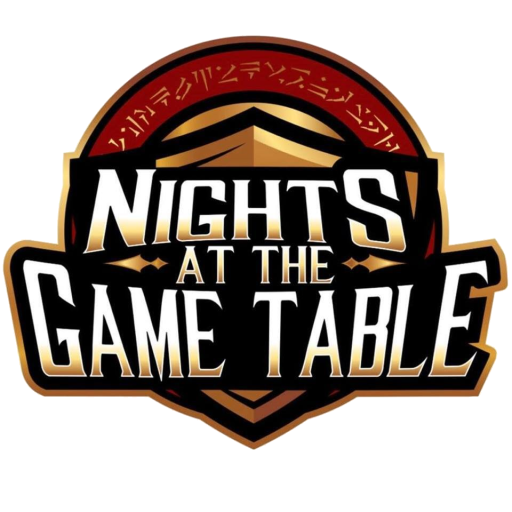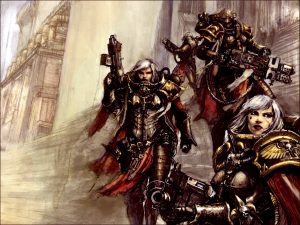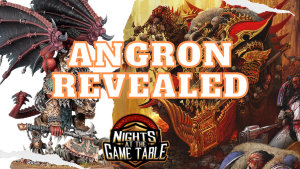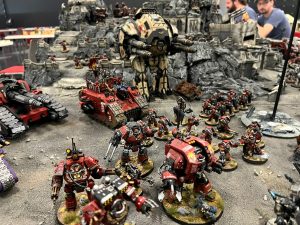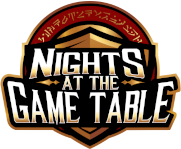How to paint: non metallic metal silver and lighting effects on Space Marines: In this article you will learn how to paint non metallic metal silver and lighting effects created by Listerpaints The method used in this article is simple, effective and can be used again and again. Phil does an incredible job of breaking the process down into 8 simple steps.
Step 1 – Start by priming the model black or ideally a dark grey. Here I’ve used Vallejo German panzer gray.
Step 2 – Make a mix of 50/50 dark sea blue and black and block in the main areas leaving the deepest recesses and strongest shadow areas black.
Step 3 – Add Vallejo stone grey to this mix at about 50/50 and start adding the main highlight areas and edge highlighting each panel. Don’t worry too much about blending at this stage, that will come later. It’s useful to study how light reflects off differently shaped metallic surfaces and to consider where the main light source will be when placing the highlights. Here the main light source is directly above the model so the main reflections will be on the upwards facing surfaces and edges. Adding some secondary reflections is also important such as the inner leg and the little brushstrokes on the kneepad.
Step 4 – Add more highlights with pure Vallejo stone grey and start blending between the highlights and shadows by glazing a mixture that’s 70/30 highlight and shadow color. You should aim to pull the glaze towards the highlights rather than away from them.
Step 5 – Continue your highlights with Vallejo green grey and gradually tighten the area that you’re highlighting so your lines are becoming thinner and thinner and edge highlights are concentrated more on the upper facing areas and corners.
Step 6 – Again, continuing with the highlights and blending using Ak interactive greenish white. Something that helps sell the nmm effect is creating a strong contrast between the highlights and shadows. This was achieved by using ‘warmer’ grey colors in steps 2-5 and switching to a ‘cold’ white for the final highlights. Don’t fuss over getting everything smooth but focus more on color choices and light placement which are more important to the effect.
Step 7 – Place final highlights with Vallejo cold white, these should be very small, almost dot light highlights at the edges and corners.
Step 8 – This isn’t a completely necessary step but it helps with the atmospheric effect. Here I have made a 90/10 mix of water and GW Cygor brown contrast paint and used an airbrush to glaze over the reflections on the inside of the leg. Adding some weathering pigments to the lower leg and base also help to make it look like the model belongs in the environment.
Paints used:
- Vallejo black
- Vallejo dark sea blue
- Vallejo stone grey
- Vallejo green grey
- Ak interactive greenish white
- Vallejo cold white
- Gw Cygor brown
- Forgeworld Pigments
Brush used:
- Windsor newton series 7 size 1
Make sure you check out our other painting tutorials!https://nightsatthegametable.com/how-to-paint-dark-angel-legion-praetor/
